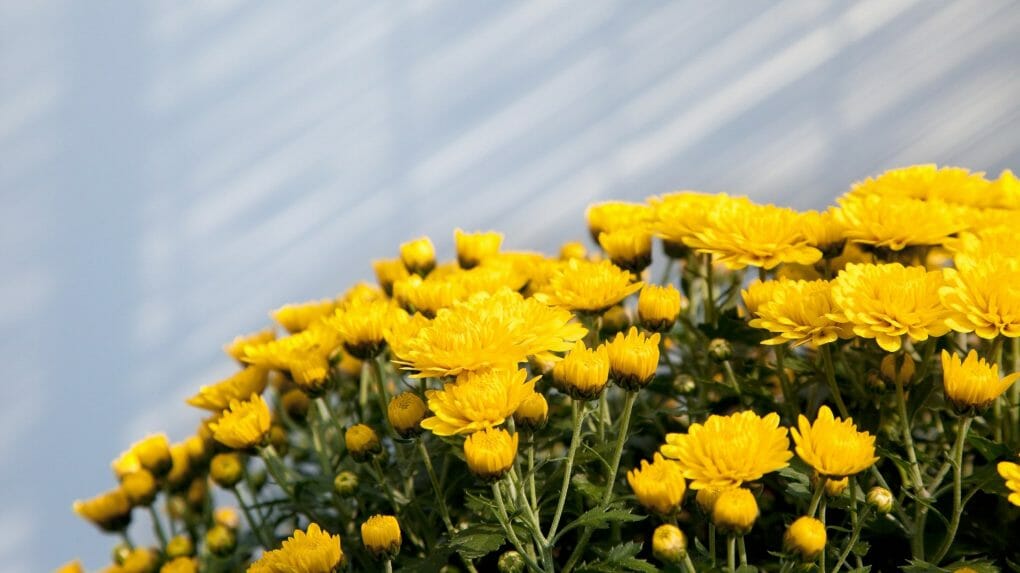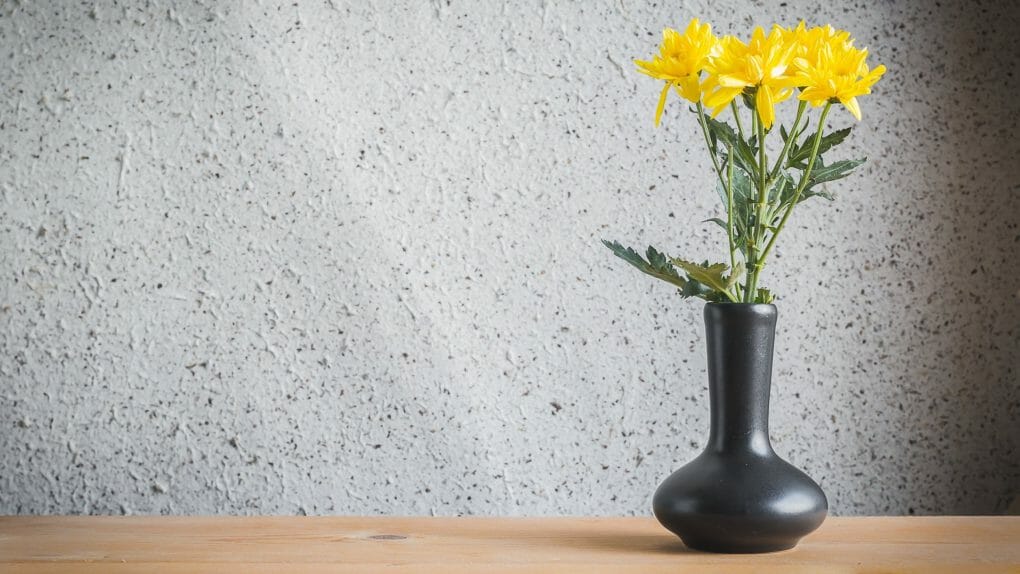Can Chrysanthemums Grow Indoors? Basic Care Guide for Indoor Mums

Chrysanthemums can be grown indoors. However, they will not perform as well as those grown outdoors in a sunny location because indoor chrysanthemums receive less sunlight and more artificial light than their outdoor counterparts. Additionally, they may suffer from soil failure and other problems if not cared for properly. Therefore, it is recommended that you grow chrysanthemums indoors only if you have plenty of space and access to adequate lighting.
Table of Contents
Indoor Chrysanthemum Care Guide
Light
Mums should be displayed near a window or another part of the house that receives bright, filtered light. Avoid direct sunlight since it can damage indoor plants. To encourage mums to bloom, cut back on daylight to about 10 hours per day.
Watering
Chrysanthemums like water. Keeping them hydrated maintains their happiness. They will shortly wilt. Check them daily, and if the top 1 inch of soil is dry or even slightly wilted, water them thoroughly. Water the soil of the mums, but avoid getting water on the leaves or flowers. As a result of the pot Mum’s remarkable transpiration rate, which is one of the reasons it is so good at purifying the air, you will need to water it rather frequently—possibly as frequently as twice per week. Always keep the soil moist.
Feeding
Chrysanthemums do not need special attention when it comes to feeding, but as with all plants, a balanced fertilizer can be used once or twice per year.
Humidity
There is no need to worry about the humidity if used as a temporary container plant. Avoid putting it in extremely dry and low-in-humidity regions if you intend to keep it for a while. Adjust any air conditioning in the house so that the average temperature is between 60-70°F (16-21°C) for best growth, especially at night. Even though indoor mums keep growing when the temperature is between 70-80°F (21-27°C) during the day, lowering the temperature may help keep the mums looking fresh and healthy.
Temperature
The majority of indoor flowering plants, like the Pot Mum, prefer temperatures between 10°C and 18°C (50°F and 65°F), which is when their blossoms last the longest.
Repotting
It won’t stay around long enough to outgrow the pot it comes in, so this isn’t necessary. If you insist on keeping it, standard repotting procedures will be followed. i.e., swap out the current pot for a larger one.
You must repot your mums with fresh potting soil if you want them to grow again in a pot or container. This enables an abundance of nutrients for the time of year.
Move to a larger container or split the plant between, making room for root growth if the roots have gotten too huge for the same-size pot, which they most certainly have. Wait to pot up your basket and container plants until the risk of frost has passed.
Propagation
Anything you “propagate” will return to the tall natural appearance that you typically find in the garden “varieties” since nurseries employ hormones to limit the growth of the plants you buy from stores.
There isn’t much purpose in trying to grow the plant in numbers for indoor use. However, if you want to grow it in numbers outside, say because you like the flower colors or designs, then gather the seed.
What Can You Expect From Indoor Chrysanthemum

Flowers
Most of the time, a plant is purchased solely for the blossoms. Although the double flowers are attractive with their cheerleader pompon-like appearance and the broad range of colors and patterns, the single flowers with their daisy-like yellow centers are the most widely used. They are available in every hue besides blue and black. Chrysanthemum plants purify the air of benzene, formaldehyde, and carbon monoxide.
Chrysanthemums come in two varieties: those suitable for flower arrangements and those that can survive the cold of autumn. Don’t be too hard on yourself if your florist mums die in the ground outside. When the flowers on your hardy winter mum have faded, you can prepare the plant for outdoor planting by cutting it back to within 4–5 inches of the soil. Getting a mum to blossom again in captivity is quite difficult.
The Rate of Growth
You can’t grow chrysanthemum indoors. But if you plant it outside after it has finished flowering, it will return to its normal, fast growth pattern. Chrysanthemums typically grow to 6 feet and a width of 4 feet. It can take up to six years for chrysanthemum flowers to bloom.
Height and Spread
Most cases can be anything up to 30 centimeters or 12 inches in either height or spread. So for best results, growing Chrysanthemums in pots or a larger container is always recommended.
Keep an Eye Out and Get Rid of Pests
- Check up on mothers frequently to look for signs of distress or unusual behavior.
- Observe your indoor mums for symptoms of aphid infestation since these insects are common pests. It would be best if you inspected the undersides of leaves for the little pests with soft bodies in different colors, such as green or black. Check for honeydew, a sticky material secreted by aphids as they siphon fluid from plant tissue, and for signs of damage on mums.
- Keep mums alive by eliminating aphids. To remove aphids on mum plants, the University of Missouri Extension recommends using a soap mixture of 2 teaspoons of mild detergent to 1 gallon of water. In a serious infestation, thoroughly saturating plants with a low-toxicity insecticide, such as insecticidal soap, is recommended.
- Check your plants for the leafminer, another common insect issue. Look for the tunnels they make in the leaf tissue as a sign that they are there. It is common for damaged plants to shed leaves, so check the soil below the plant for evidence.
- The leaves that leafminers have mined should be cut off using pruning shears and thrown away. Saturate the mum plant completely with neem oil to eradicate leafminers. It is unusual for plants to sustain significant damage from these insects.
